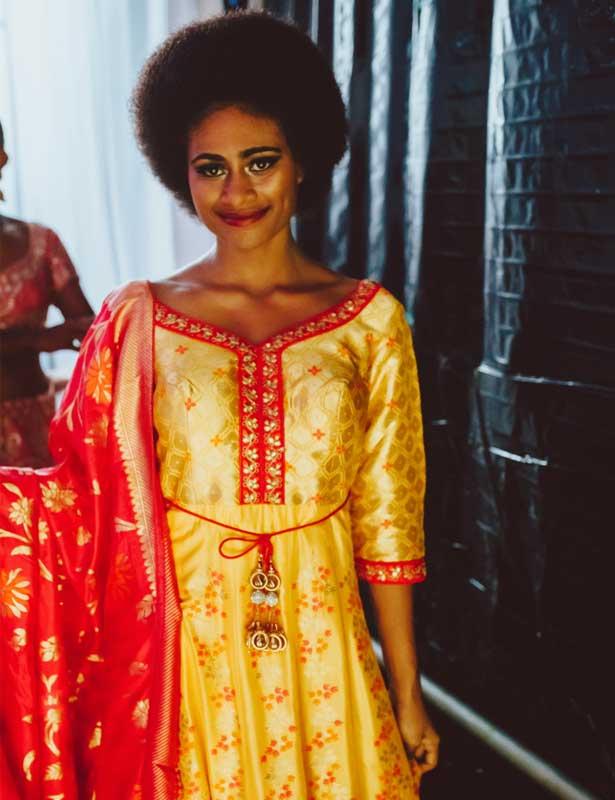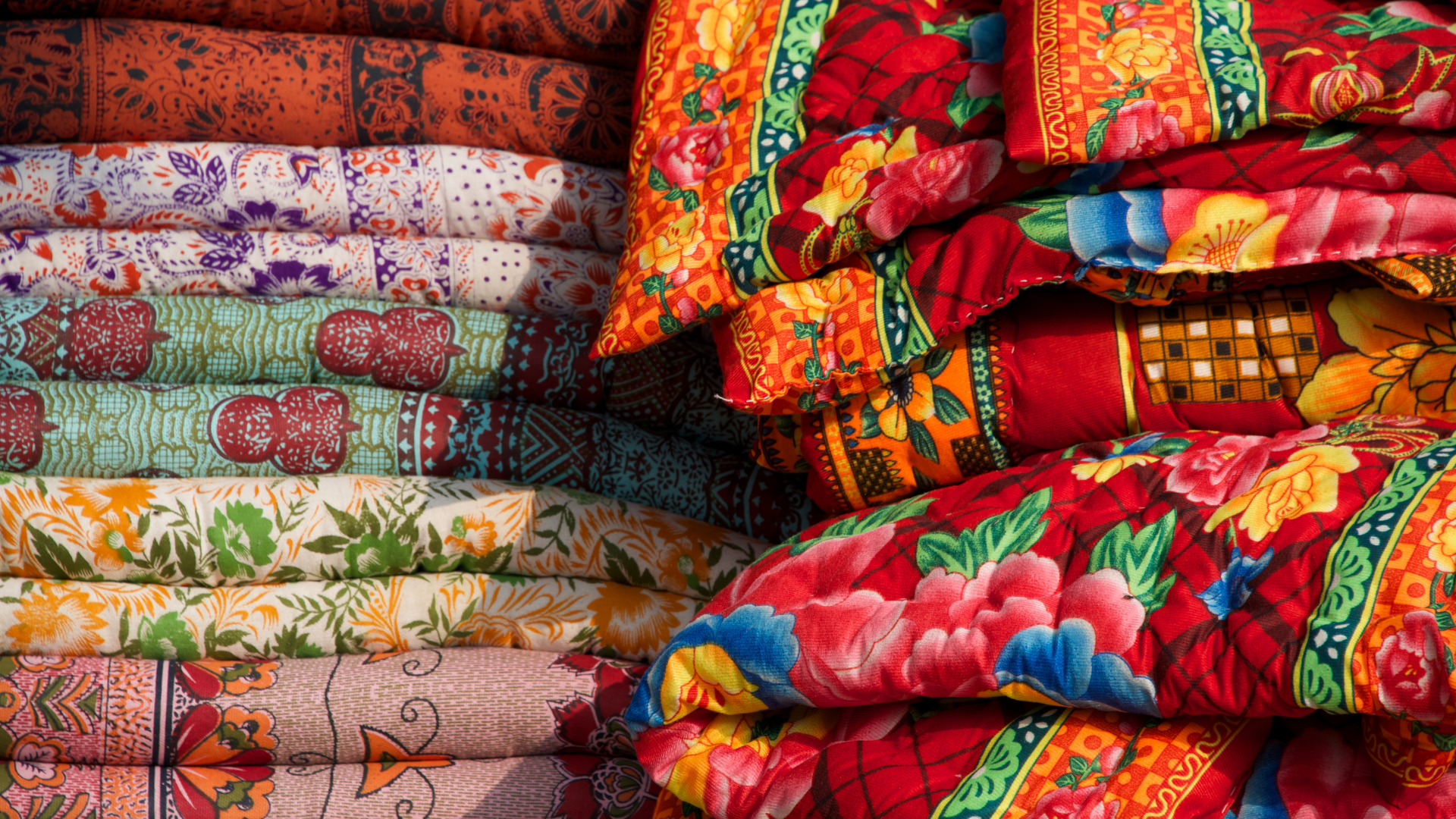By clicking submit, I consent to my personal data being collected, stored, and processed by Think Pacific in accordance with our Privacy Policy.
Clothing in the Indo-Fijian community has gradually evolved from traditional to contemporary. Yet, there is still somewhat of a disparity that exists between people’s traditional clothing based on different religious backgrounds which simultaneously come under the common identity, “Indo-Fijian”. Faiths such as Islam, Hindu, Sikhs.
However, clothing has become dependent on changing climate and fashion trends from the Western world, such influence has lead to contemporary clothing styles being adopted by the majority.
Historically, male and female clothing has evolved from simple garments like achkan, lungi, sari, and loincloths to cover the body into elaborate costumes not only used in daily wear, but also on festive occasions. In urban areas, western clothing is common and uniformly worn by people of all social levels.
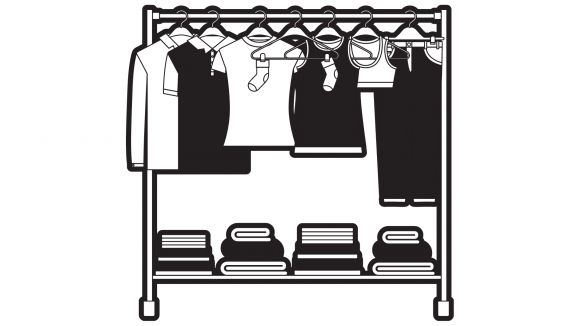
However, clothing has become dependent on changing climate and fashion trends from the Western world, such influence has lead to contemporary clothing styles being adopted by the majority.
Historically, male and female clothing has evolved from simple garments like achkan, lungi, sari, and loincloths to cover the body into elaborate costumes not only used in daily wear, but also on festive occasions. In urban areas, western clothing is common and uniformly worn by people of all social levels.
See below for some of the most common examples…
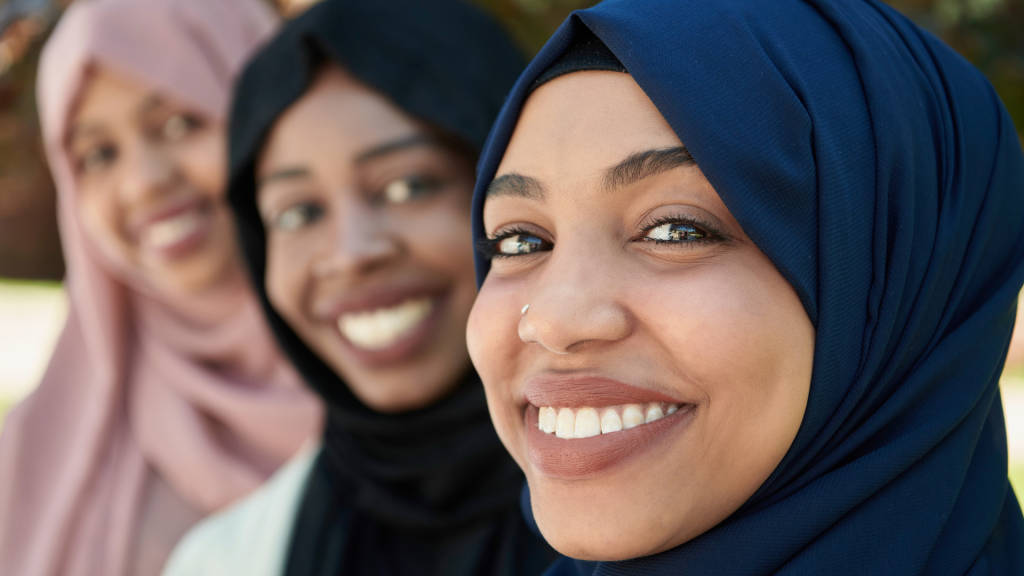
Clothing in Islam is interpreted as being in accordance with the teachings of Islam. Muslims wear a wide variety of clothing, which is influenced not only by religious considerations, but also practical, cultural, social, and political factors. In modern times, some Muslims have adopted clothing based on Western traditions, while others wear modern forms of traditional Muslim dress, which over the times has typically included long, flowing garments. Besides its practical advantages as being comfortable, loose-fitting clothing is also generally regarded as conforming to Islamic teachings, which stipulate that body area which are sexual in nature must be hidden from public view.
Traditional dress for Muslim men typically covers at least the head and the area between the waist and the knees, while traditional women’s dress conceals the hair and the body from the ankles to the neck.
Some Muslim women also cover their faces. Islamic dress is influenced by two scriptural sources, the Quran and hadith. The Quran provides guiding principles believed to have come from God, while the body of hadith describes a human role model through the traditions of the Islamic prophet Muhammad.
Women
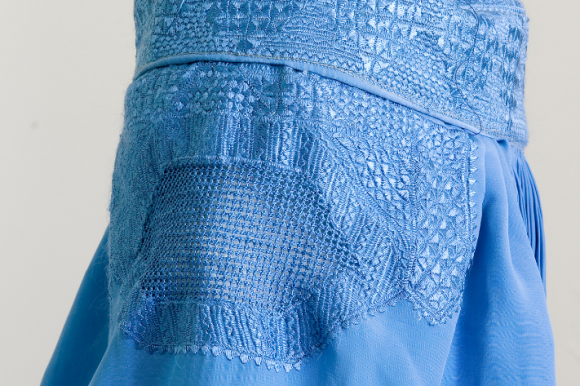
This type of veil and body covering conceals all of a woman’s body, including the eyes, which are covered with a mesh screen.

A normal hijab for Muslim women, most commonly seen.
Men
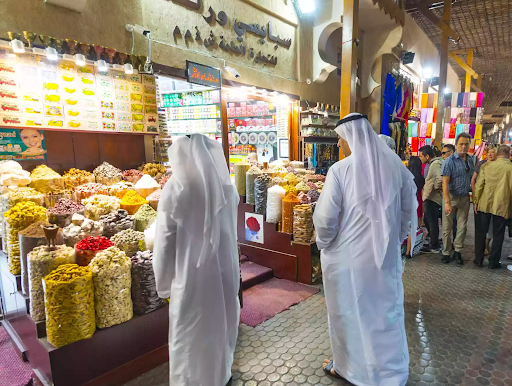
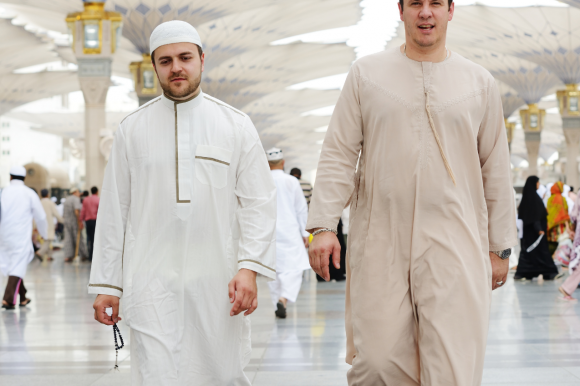
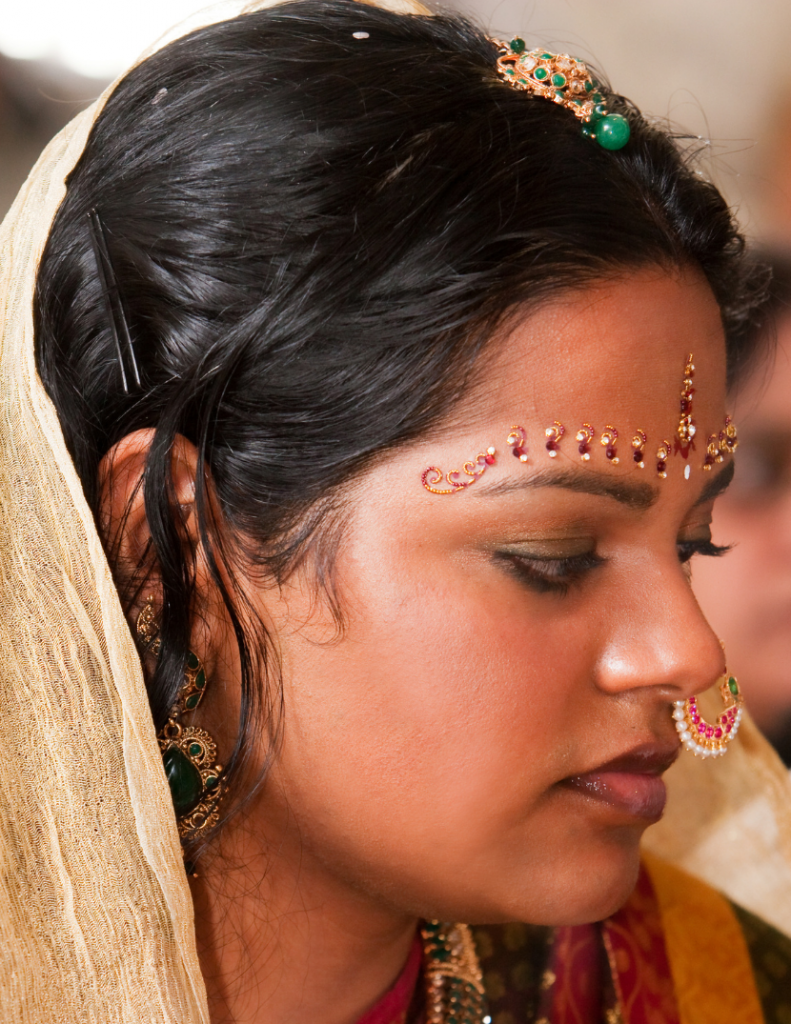
Traditional Hindu clothing for women consists mainly of the sari (saree) and the salwar kameez.
Women
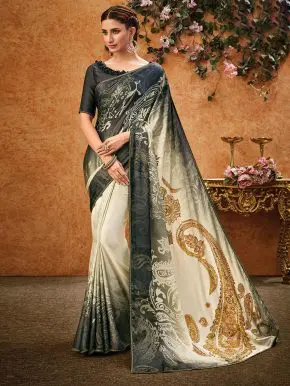
The sari is a brightly colored material that is wound and pleated around the waist so that it covers the legs, with an underskirt or petticoat beneath it of a matching color/pattern.
A short, tight blouse (choli), with or without sleeves, is worn with the ends of the sari draped over the shoulders, often leaving the midriff bare.
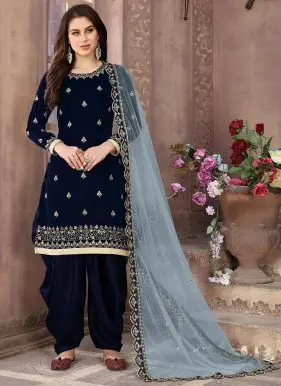
The salwar kameez is a tunic (kameez) that is long enough to partially conceal loose-fitting trousers (salwar)
See in the photo the difference in the outfit from the sari example above 👆
In contemporary times, fashion designers are coming up with more and more innovative styles, designs, and patterns. Today, there are varied necklines and even there is a lot of scope for experimenting with different decorative items for ornamentation such as sequins, mirrors, embroideries, and so on. Suits are stitched in different styles having different shapes. Ideally, the length of the kameez should be knee-length according to the traditional style. However, the modern customized suits have different kinds of cuts and shapes
Men
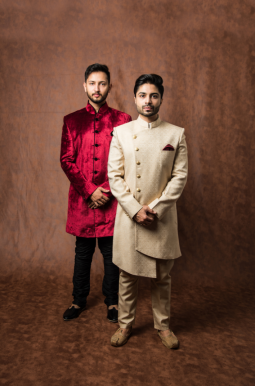
Sherwani stands for its richness and royalty. Classic sherwanis are made in silk, rich cotton, and brocade with traditional carved buttons, high neck collars, and usually paired with churidar pants or dhotis. They are also accessorized with dupatta, kilangi, mala, and jootis.
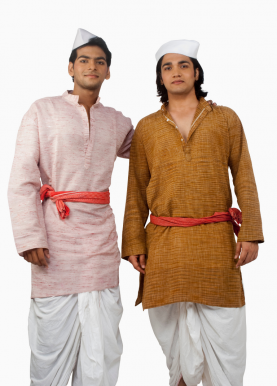
Dhoti kurta is the most traditional of all dresses worn by Indian men. Dhoti is a rectangular piece of unstitched cloth about five yards long, wrapped about the waist and legs and knotted at the waist.
Earlier dhoti kurta used to be casual daily wear of the Indian men. But with the modernization of our society, it steadily got relegated to just formal clothing. It has also been recreated to fit in our contemporary fashion.
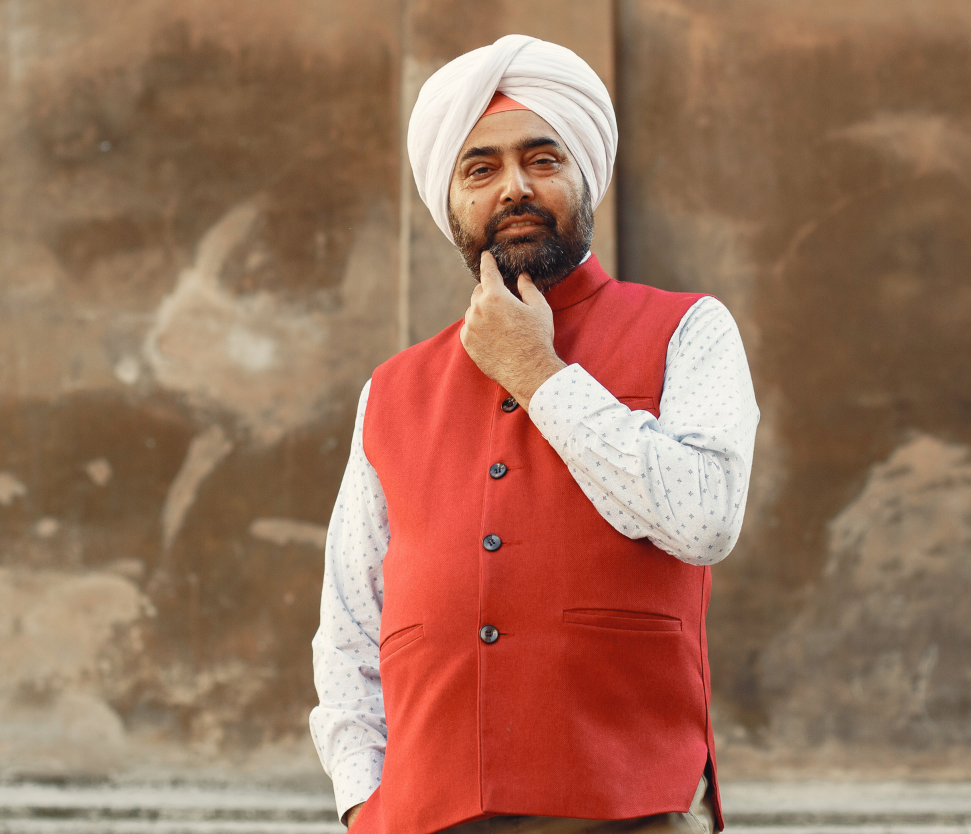
There is less ‘specific’ clothing for Sikhs. Usually, the traditional dress for Sikh men has been European or Indian style trousers and shirts whereas Sikh Women put Salwar Kameez. Sikhs commonly wear Indian clothing. Men and sometimes women also wear turbans.
Yet, Sikh beliefs filter through into the appreciation of respect for physical presentation. After baptism, a Sikh has to follow the 5K’s (Punj Kakkar):
– Kesh – Keeping hair.
– Kanga – A small wooden comb to keep hair clean and tidy.
– Kaccherra – Shorts to ensure easy movement and comfort.
– Kara – A round, metal bracelet that symbolizes that God was never born and will never die.
– Kirpan – A dagger that symbolizes bravery; not to be used to harm anyone.

As a multicultural country, people from all walks of faith come together to celebrate each other’s culture. Especially during festivals, people celebrate and wear other culture’s traditional clothing. Indigenous Fijian women wearing saree and kameez, Indo-Fijian women also wear blue clothing, either casually or for a certain occasion. It is also popular to wear ‘bula’ (brightly coloured Fijian clothing) clothes on Friday, almost everyone can be seen wearing them. ‘Bula’ clothes have become very popular as casual wear and have been vastly recreated with contemporary designs. It has become very popular with tourists as well as it gives that rich cultural value they want to take back with them.
